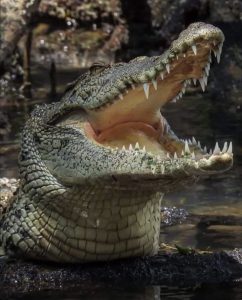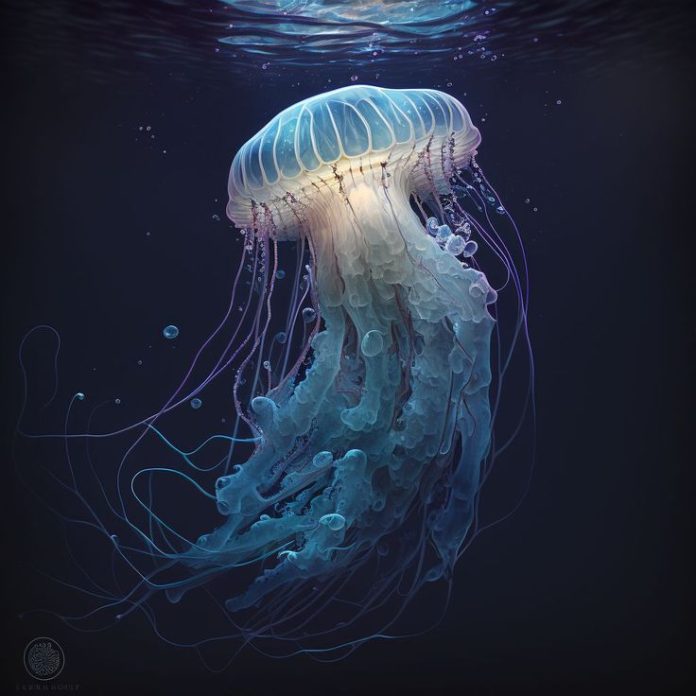What Is the Most Dangerous Animal in the World
The assessment of the “most dangerous” animal in the world can vary depending on how you define danger and the context in which you’re evaluating it. Some of the animals often considered to be among the most dangerous in terms of their potential to harm humans include:
Mosquitoes: Mosquitoes are responsible for transmitting diseases like malaria, dengue fever, Zika virus, and others, which collectively result in hundreds of thousands of human deaths each year.
Humans: Unfortunately, humans themselves are responsible for a significant amount of harm and death to other humans through actions like violence, warfare, and various forms of crime.
Crocodiles: These large reptiles are known for their powerful jaws and are responsible for numerous fatal attacks on humans each year.
Snakes: Some snake species, like the inland taipan and black mamba, have extremely potent venom that can be deadly to humans.
Box Jellyfish: Found in the waters around Australia and Southeast Asia, the box jellyfish is considered one of the most venomous creatures in the world. Its sting can be fatal.
African Cape Buffalo: This large and powerful herbivore is responsible for more human deaths on the African continent than any other large animal, primarily due to its aggressive behavior when threatened.
Elephants: While typically gentle creatures, elephants can be dangerous when provoked or agitated. They are responsible for a number of human fatalities each year.
It’s important to note that the danger posed by animals can vary significantly depending on factors like location, human behavior, and the specific circumstances of an encounter. In many cases, proper education and precautions can reduce the risks associated with interactions with potentially dangerous animals.
Deadly Predators in the Wild
The wild is a brutal battleground, where survival of the fittest reigns supreme. Some of the most dangerous animals in the world are found here. Lions, tigers, and other big cats, armed with powerful jaws and sharp claws, are iconic predators, capable of taking down animals much larger than themselves.
The Deceptive Tiny Killers
Deadliness isn’t confined to large predators alone. Insects like the mosquito, known for transmitting deadly diseases, claim hundreds of thousands of human lives annually. Their minuscule size masks the danger they pose.
Venomous Creatures
Venomous creatures like the box jellyfish, cone snail, and stonefish are capable of delivering lethal toxins. These animals remind us that danger often comes in small, inconspicuous packages. Don’t Forget to Check Out Our Website: universalbrowse
The Human Impact
Our activities have an enormous impact on the danger posed by certain animals. Deforestation, pollution, and habitat destruction can lead to conflict with animals like the African elephant, which, when provoked, becomes a formidable adversary.
Deadly Animals Around the Globe
Dangerous animals are not limited to specific regions. They can be found in various ecosystems across the globe, from the depths of the ocean to the highest mountains.

Marine Menaces
Deadly marine creatures include the great white shark, known for its powerful bite, and the tiny but deadly blue-ringed octopus, with venom that can paralyze and kill.
Land-Based Threats
On land, the aggressive and territorial honey badger, the powerful grizzly bear, and the agile but venomous black mamba snake pose significant threats.
Airborne Hazards
Dangerous birds, like the cassowary with its dagger-like talons, and insects like the bullet ant with one of the most painful stings, remind us that danger can come from the sky.
Unconventional Threats
While many dangerous animals are well-known, some are relatively obscure. Creatures like the slow loris, which secretes a toxic bite, and the blue poison dart frog, with its lethal skin toxins, also deserve attention.
The Most Dangerous Animal on Earth
It may come as a surprise, but the most dangerous animal on Earth is none other than the mosquito. These tiny insects are responsible for transmitting diseases like malaria, Zika, and dengue, causing millions of human deaths annually.
Evolution of Danger
The concept of danger in animals has evolved over millennia. Predators have developed deadly adaptations, while prey have developed defense mechanisms to survive in a world where danger is omnipresent.
Survival Strategies
The animal kingdom is a constant battlefield. Some species, like the archerfish, have developed ingenious ways to capture prey, while others, like the pangolin, rely on armor to protect themselves from predators.
Coexistence and Conservation
As humans encroach on natural habitats, coexisting with dangerous animals becomes increasingly challenging. Conservation efforts are crucial to preserving these creatures while ensuring human safety.
Conclusion
The world is teeming with dangerous animals, from predators in the wild to venomous creatures and tiny killers. It’s a reminder of the diverse and often unexpected sources of danger in the natural world. As we strive to coexist with these animals, understanding their behavior and the role they play in the ecosystem is vital for our own survival.
FAQs
1. What makes an animal dangerous?
A. Animals can be dangerous due to various factors, such as their size, strength, venom, and aggressive behavior. It’s often a combination of these traits that makes an animal particularly dangerous.
2. Are humans the most dangerous animals?
A. While humans possess the intelligence and tools to be incredibly dangerous, we are not the most dangerous animals in terms of direct lethality. Animals like mosquitoes, responsible for disease transmission, claim more lives annually.
3. Can dangerous animals be conserved?
A. Yes, it is possible to conserve dangerous animals while ensuring the safety of both wildlife and humans. Conservation efforts involve creating safe habitats and implementing strategies to reduce human-animal conflicts.
4. Are all dangerous animals predators?
A. Not all dangerous animals are predators. Some are dangerous due to their venom, territorial behavior, or defense mechanisms. Predators are one category of dangerous animals.
5. How can humans protect themselves from dangerous animals?
A. Protecting yourself from dangerous animals involves being informed about the risks, following safety guidelines, and, when necessary, seeking assistance from experts in wildlife management.













